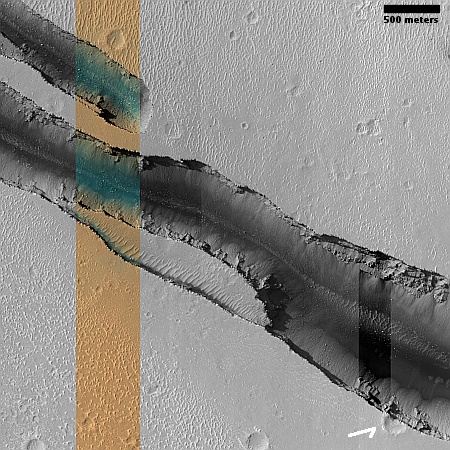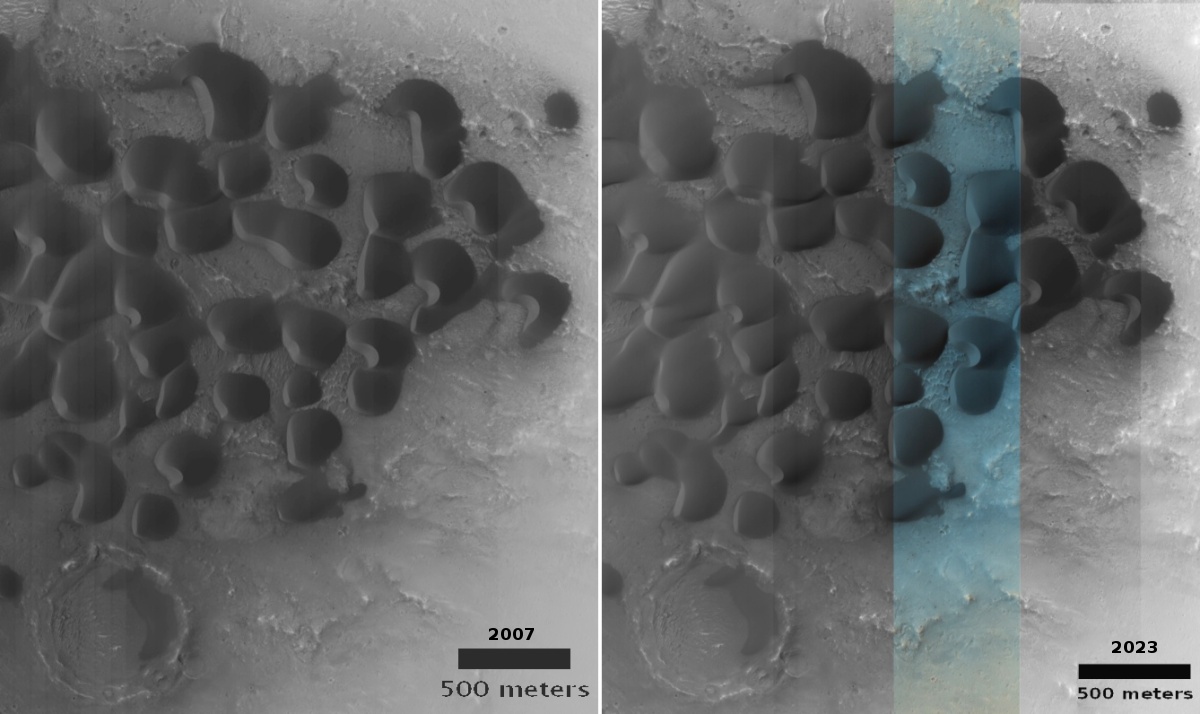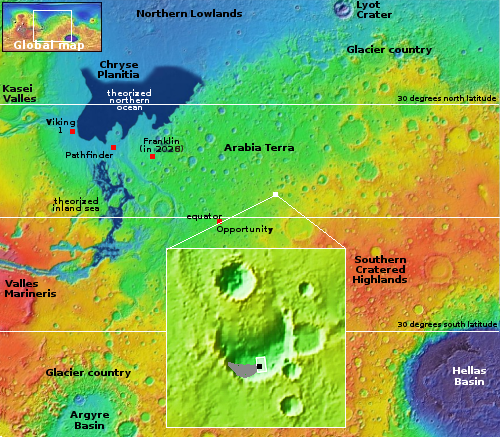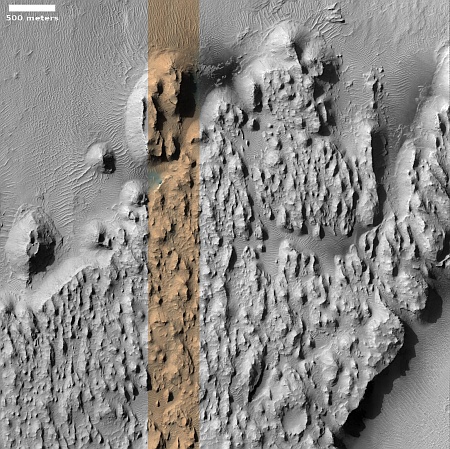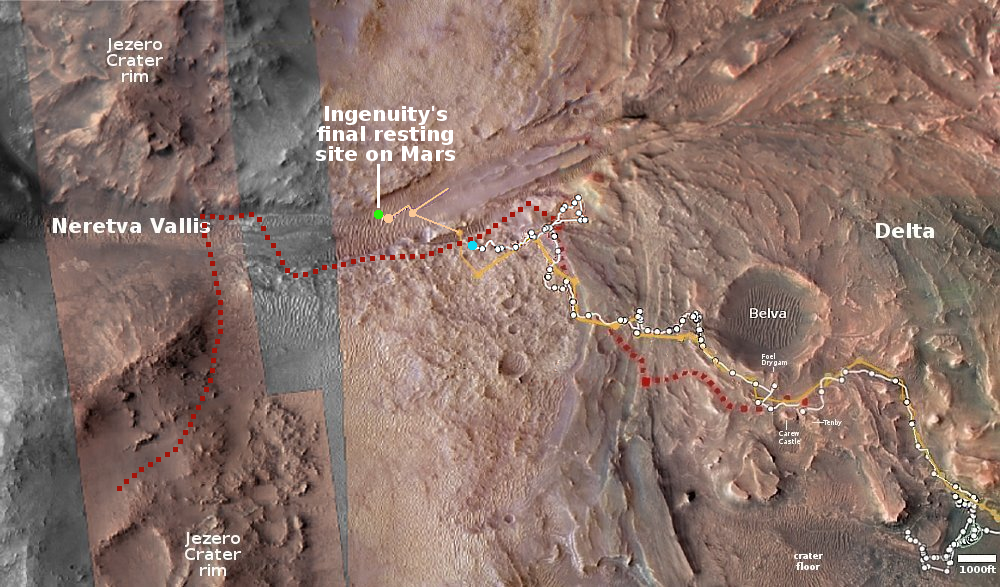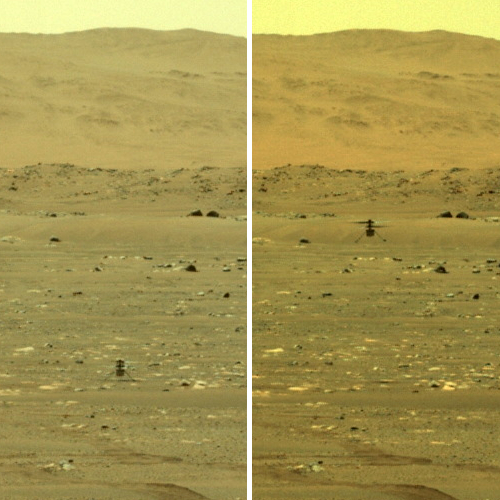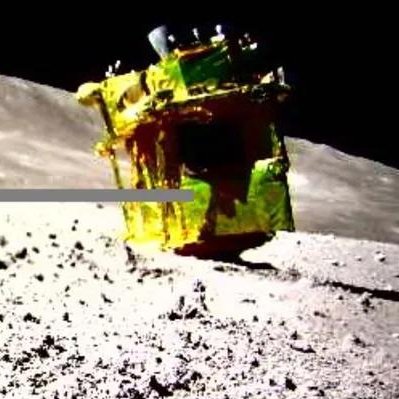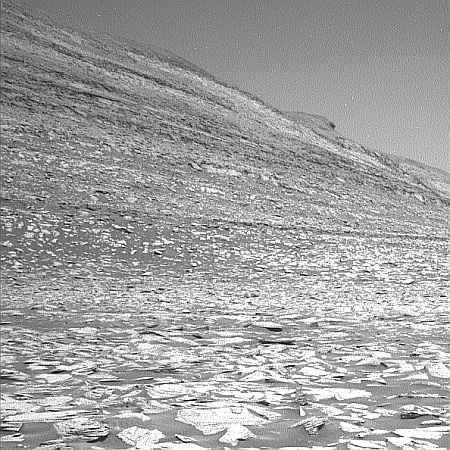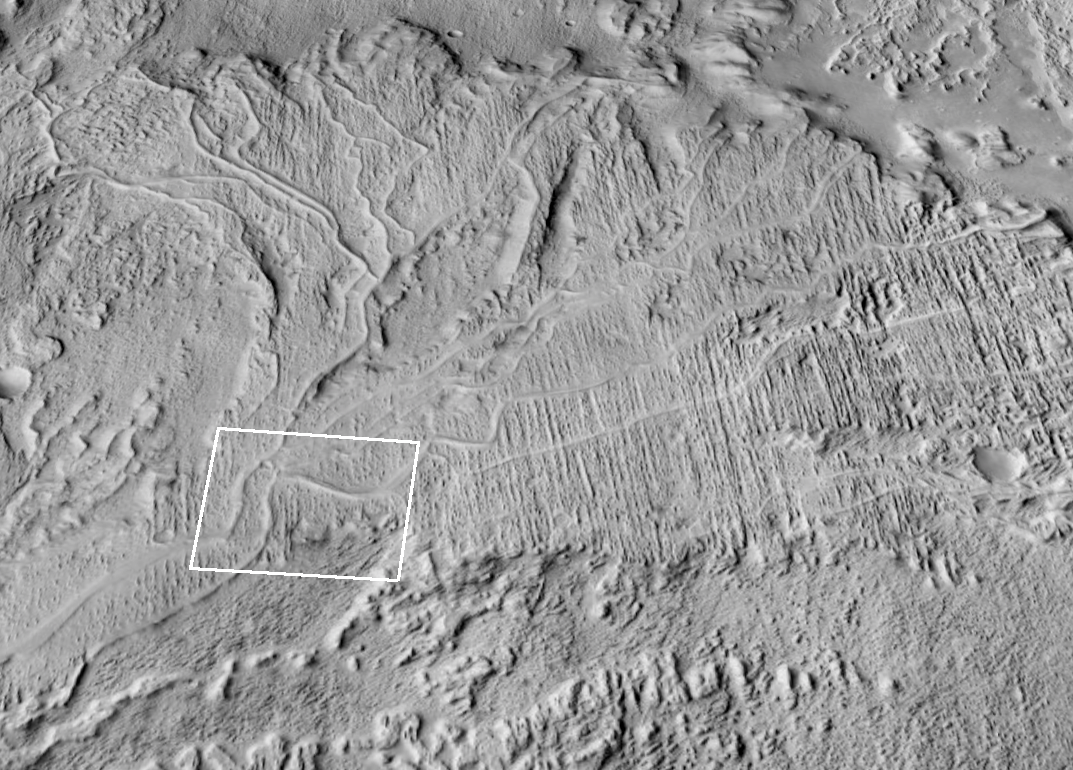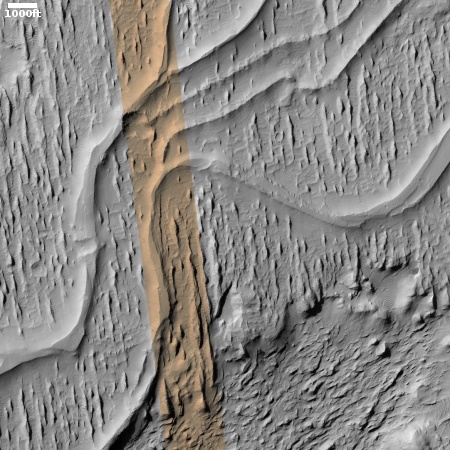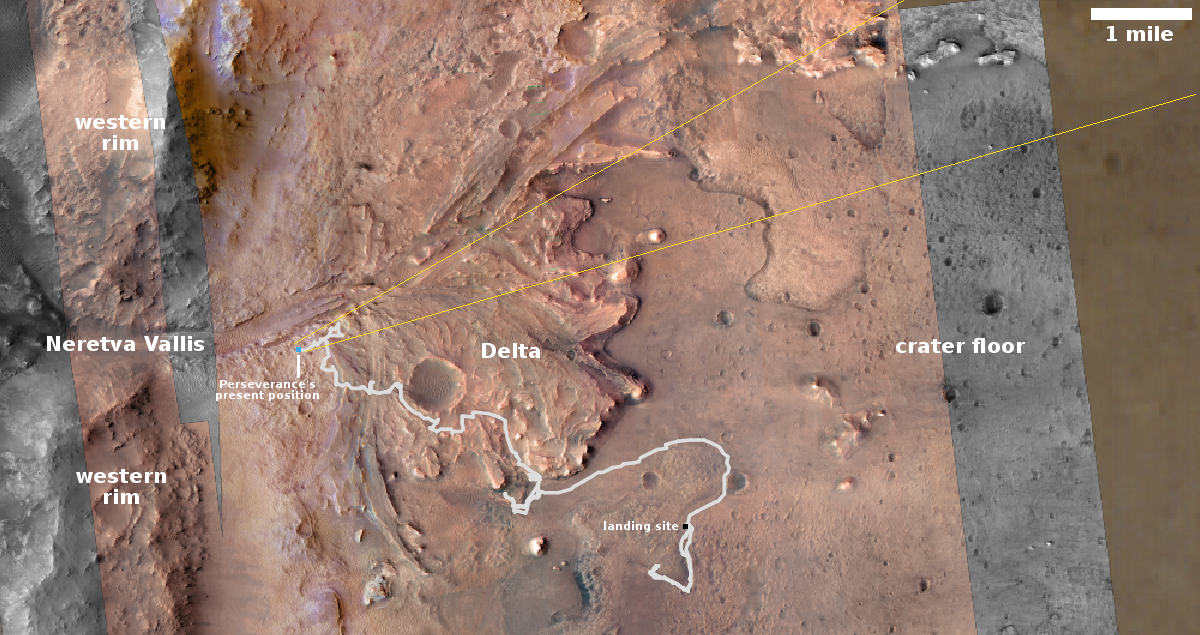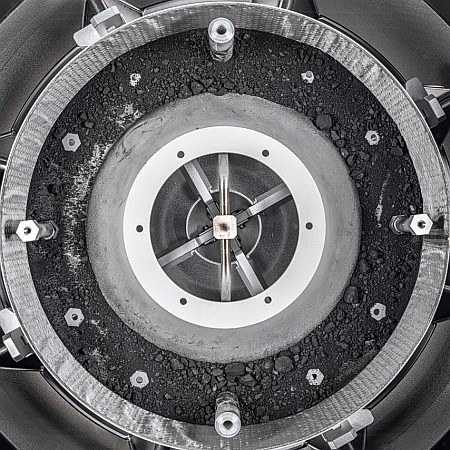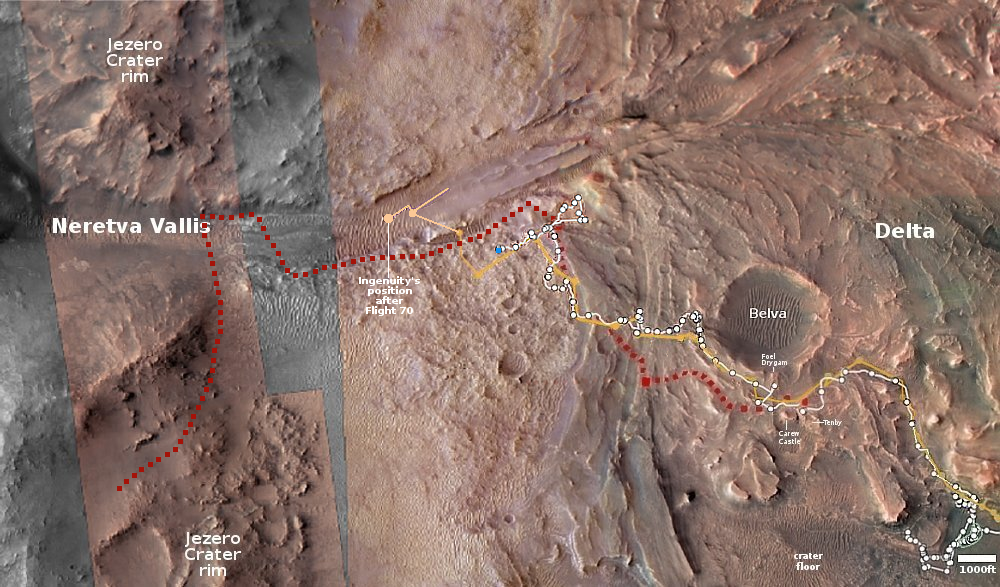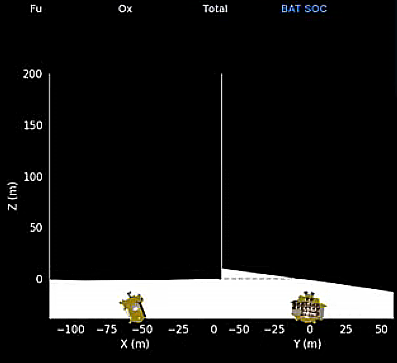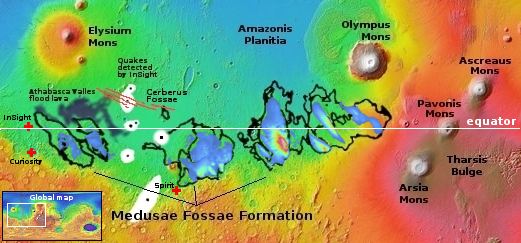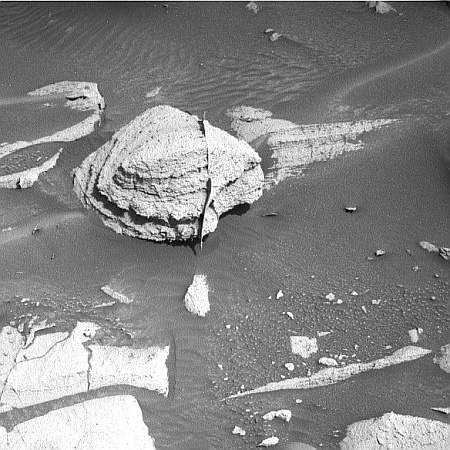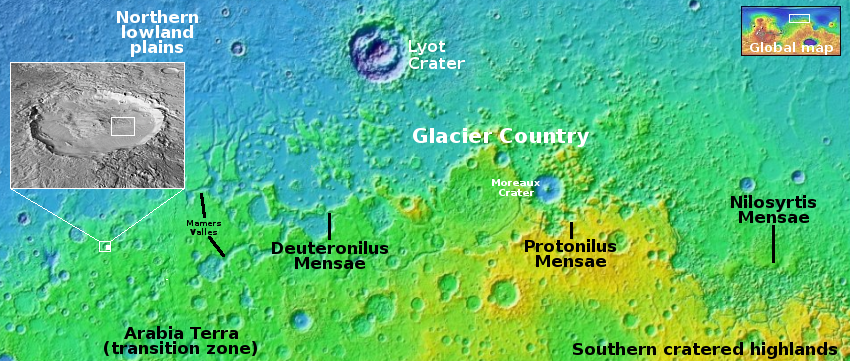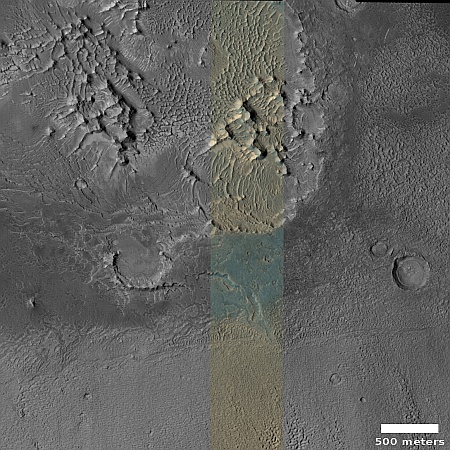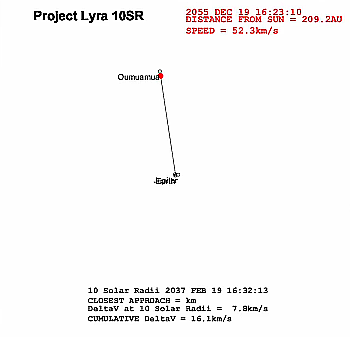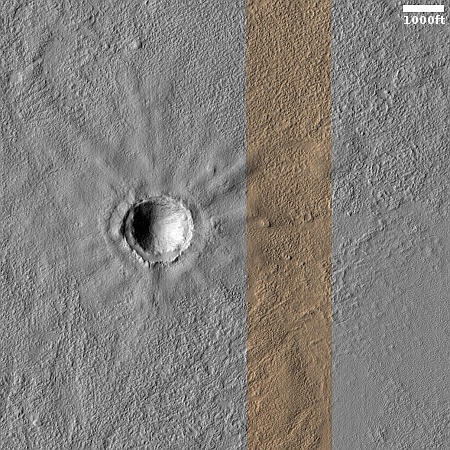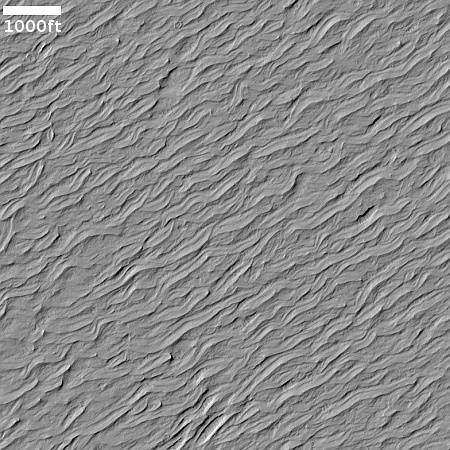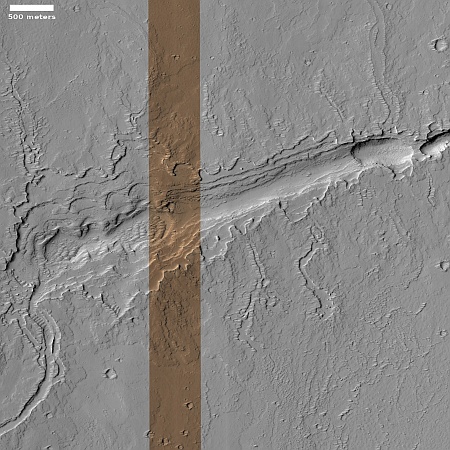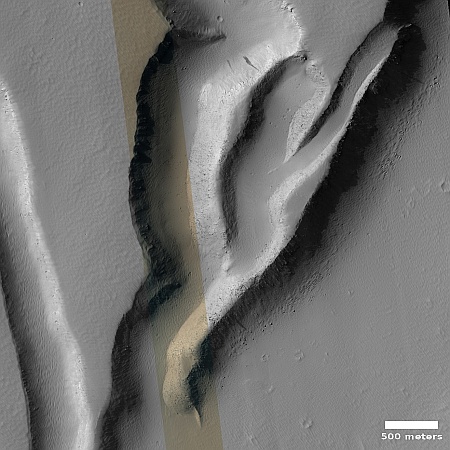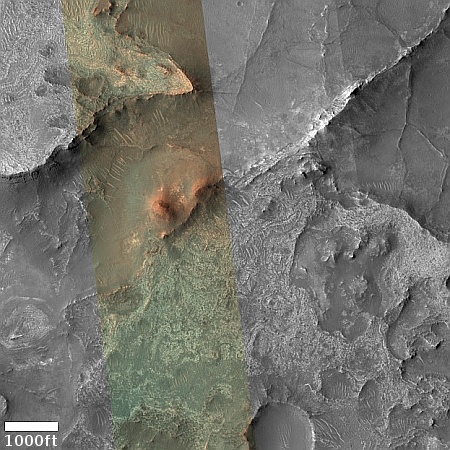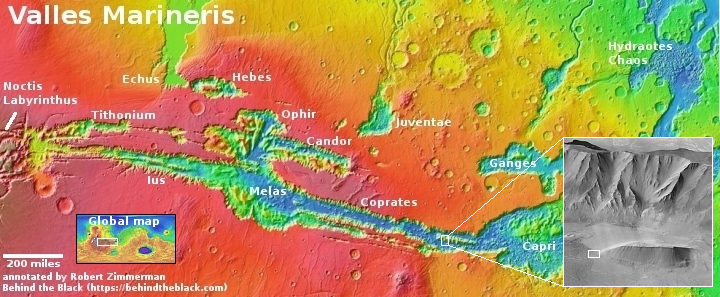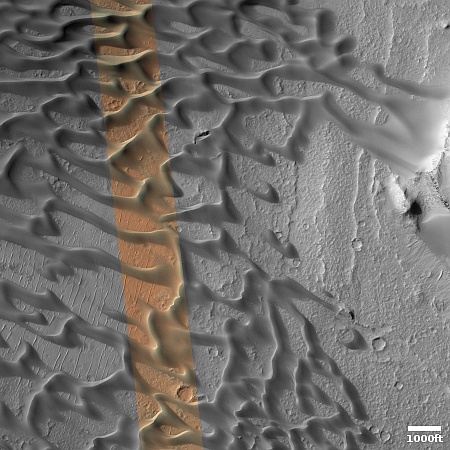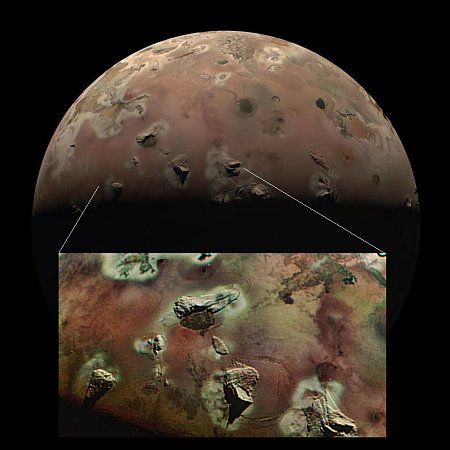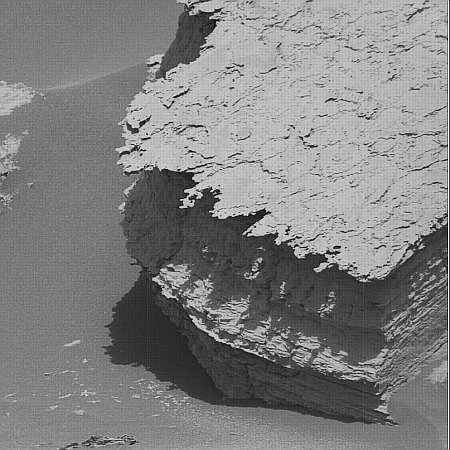Juno completes its closest approach of the Jupiter moon Io
The Jupiter orbiter Juno successfully completed its 58th close fly-by of the gas giant, during which it also made its closest approach to the volcanic moon Io, zipping past at a distance of 932 miles. The image of Io to the right, cropped and reduced to post here, was taken at that closest Io approach, and shows a mountain on the horizon as well as a large shield volcano in the center (the dark splotch), with a major lava flow to the south. The picture was processed by citizen scientist Brian Swift.
Another image, processed by Björn Jónsson, shows the differences at one volcano dubbed Loki between the December 30, 2023 and the February 3, 2024 flybys. It appears that the brightness of the apron of lava that surrounds the volcano changes significantly depending on the lighting and the angle of view. In December it was almost black. In February it was greyish silver, almost shiny.
Another image, processed by Andrea Luck, captured faint eruption plumes on Io’s edge, caused by an ongoing eruption just beyond the horizon.
Juno still has four more flybys of Io coming up, but none will be as close as the February 3rd approach.
The Jupiter orbiter Juno successfully completed its 58th close fly-by of the gas giant, during which it also made its closest approach to the volcanic moon Io, zipping past at a distance of 932 miles. The image of Io to the right, cropped and reduced to post here, was taken at that closest Io approach, and shows a mountain on the horizon as well as a large shield volcano in the center (the dark splotch), with a major lava flow to the south. The picture was processed by citizen scientist Brian Swift.
Another image, processed by Björn Jónsson, shows the differences at one volcano dubbed Loki between the December 30, 2023 and the February 3, 2024 flybys. It appears that the brightness of the apron of lava that surrounds the volcano changes significantly depending on the lighting and the angle of view. In December it was almost black. In February it was greyish silver, almost shiny.
Another image, processed by Andrea Luck, captured faint eruption plumes on Io’s edge, caused by an ongoing eruption just beyond the horizon.
Juno still has four more flybys of Io coming up, but none will be as close as the February 3rd approach.


